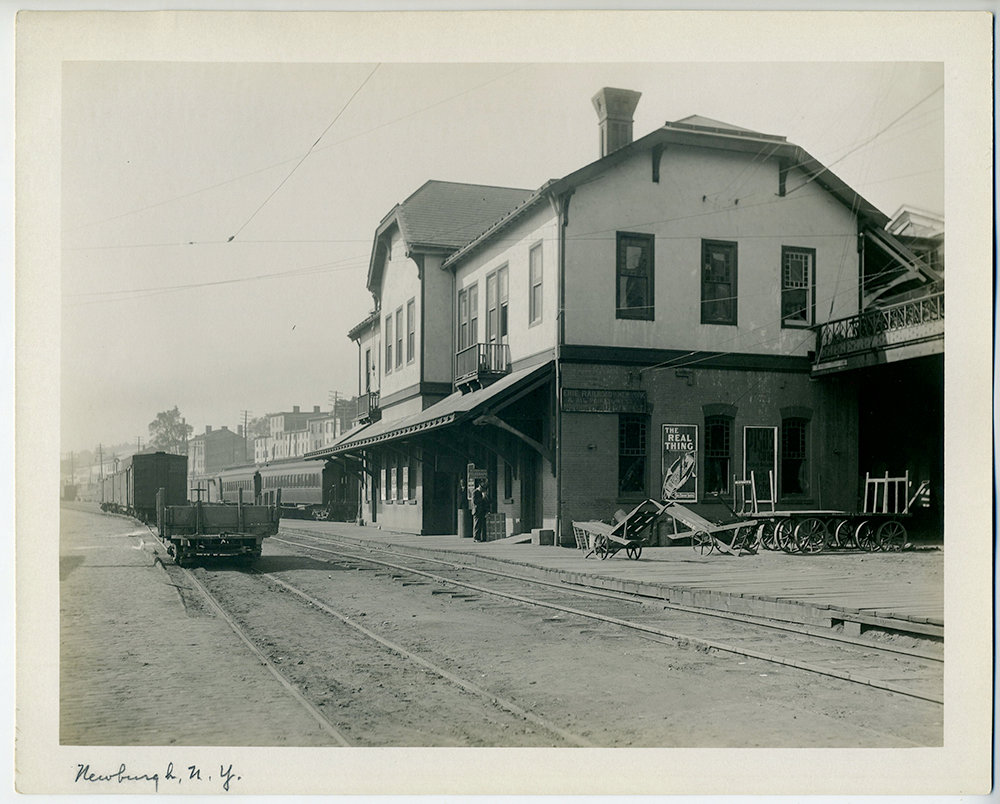
The busy Union Station handled passenger service for several rail companies.
By Mary McTamaney
Among the many strange benchmarks of the year 2020, is the fact that it saw travel shrink dramatically. Americans have been known as a nation always on the move.
Newburgh’s geography made that easier than it was for many communities. Nature gave us a wide river as our first highway and the many little valleys formed by our smaller creeks gave us openings to build a network of roads so we could travel among neighboring settlements.
Then the steam engine was invented and soon railroads began carrying not only massive loads of freight but passenger coaches of people who could get to jobs and to visits with family and friends without owning a horse.
Nineteenth century rail lines were built in spider web patterns through the center of Newburgh’s waterfront. By the 1880’s, over seventy trains came to Newburgh every day. The Newburgh & New York, The New York Central and Hudson River Railroad, The West Shore Railroad, The New York and New England, The Newburgh, Dutchess and Connecticut, The Lehigh and Hudson River and the New York, Lake Erie and Western were all railroad companies that made stops in Newburgh to collect passengers and freight. Only steps away from these train platforms, passengers and wagon masters could connect to ferries, to steamboats and barges and to street trollies that moved everyone and everything along on its way. For a time, 19th century New Yorkers could step from their front door and, using a local trolley and then a regional train, work their way from city to city around the Mid-Atlantic. It became a golden era for travelling salesmen, known as commercial travelers, who brought samples of the latest products to retailers everywhere. They were able to promise customers that, as soon as they telegraphed an order into their corporate headquarters, goods would be sent along the rails and reach local stores in just a few days.
In the early 20th century, Newburgh had three large railroad stations plus a few freight storehouses, engine repair shops, switching booths and coal and water silos. For a small child living in a downtown apartment, the view out the window must have been endlessly fascinating – better than any toy train set. The three biggest facilities were the Newburgh freight station between the river and Front Street run by the Erie Railroad; the Union Station, where passenger trains from many corporate lines came and went along lower (Front Street level) and upper (Water Street level) tracks and the newest station, The New York Central passenger terminal, still standing on South Water Street and now shared by a pizza and a taco shop.
When the brick and stone N.Y. Central Station was built in 1909, it was linked across those upper level tracks by a pedestrian walkway created for that purpose. That enclosed walkway required a big new interior staircase added to the Union Station and emerging from the crest of its old roof.
If we could walk it today, it would take us to the back door of The Pizza Shop.